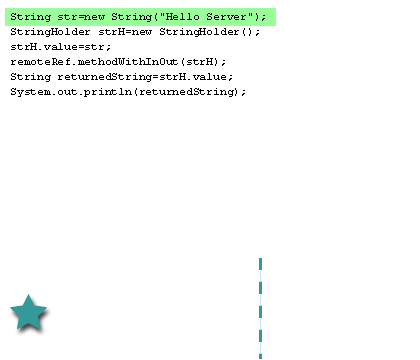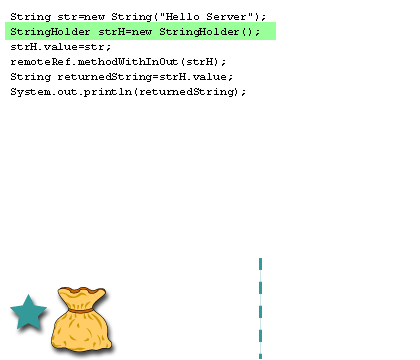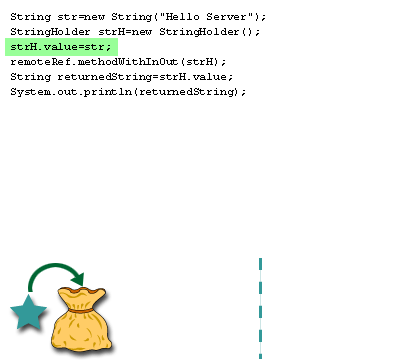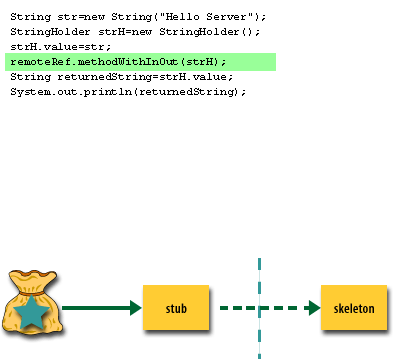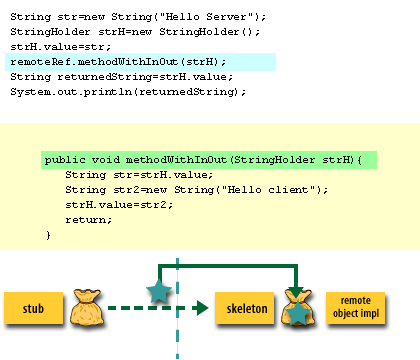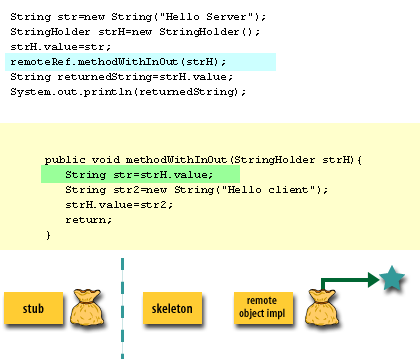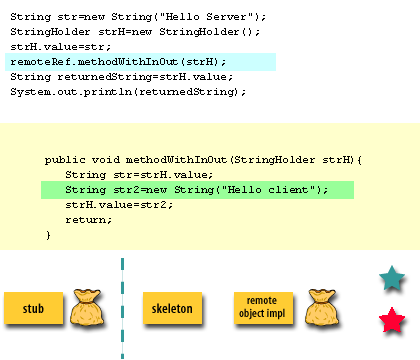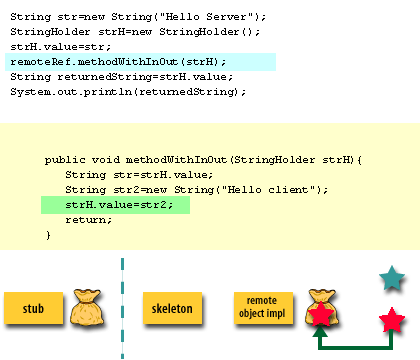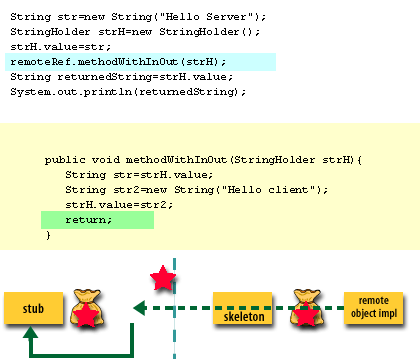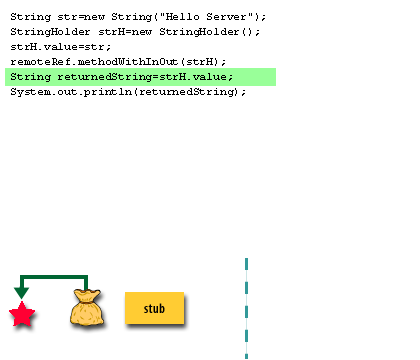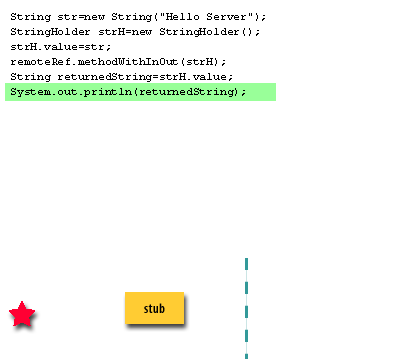Using Corba holders
boolean getJobInfo(in long number, out jobInfo info)
One of the things I have learned about Java and mapping
To use a holder class you must do the following;
inout and out parameters is the use of holder classes.
Java cannot directly map these types and has to make use of holder classes. To use a holder class you must do the following;
jobInfo jbInfo = new jobInfo(); jobInfoHolder jbInfoHolder = new jobInfoHolder(jbInfo); jbSession.getJobInfo(jobNumber, jbInfoHolder); System.out.println(jbInfo.number);
Each holder class has a value property that returns the value of the object that it is holding.
So for this example one should have:
jobInfo jbInfo = new jobInfo(); jobInfoHolder jbInfoHolder = new jobInfoHolder(jbInfo); jbSession.getJobInfo(jobNumber, jbInfoHolder); jbInfo = jbInfoHolder.value System.out.println(jbInfo.number);
